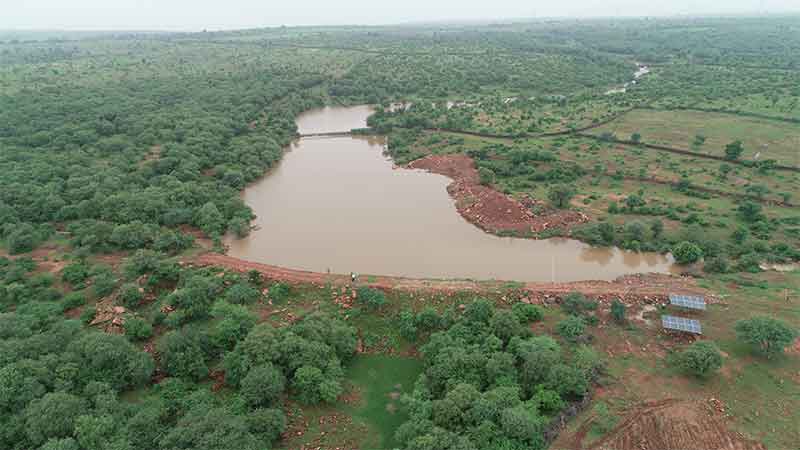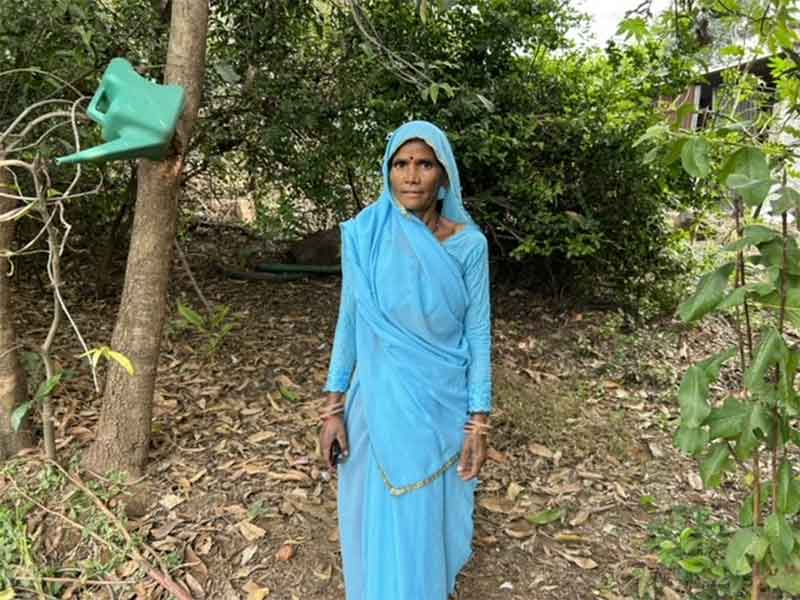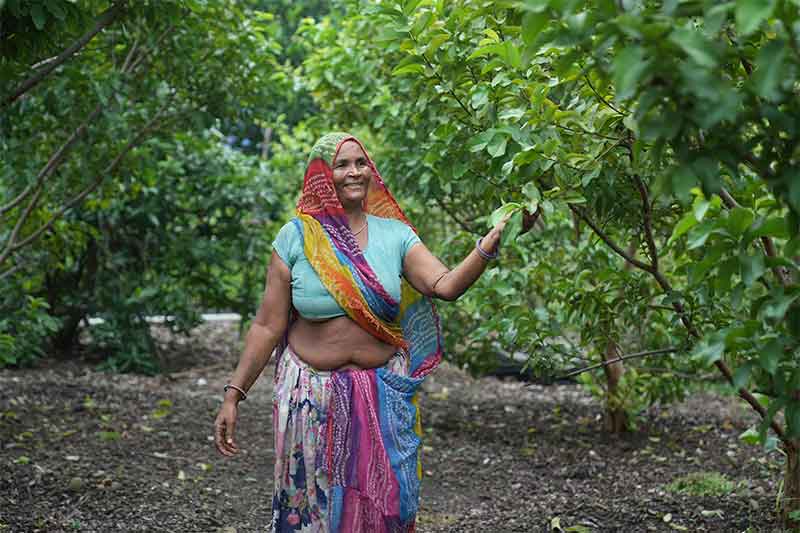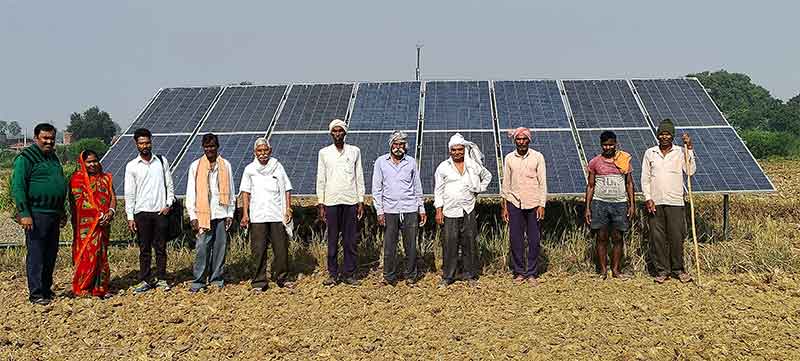
Visiting villages in several remote parts of India I have often thought about the possibilities of creating villages with almost zero burden of fossil fuels, something that can be a huge contribution to climate change mitigation later when it can be taken to many more villages suitable for this. Recently I visited some villages which are not integrated with the regular electricity grid, and I felt that a beginning could be made here but of course the potential is much wider.
Ultimately the most important thing for anyone committed to the welfare of people and villagers is to have development initiatives that enhance the sustainable development potential and overall welfare of villagers, and for me the challenge of reducing significantly or even eliminating the burden of fossil fuels in many villages makes sense only when it is taken up in ways which enhance the welfare of villagers. I would like to reject entirely any big business driven agenda of reducing fossil fuels burden that displaces villagers, or gobbles their land, or reduces their welfare.
Fortunately, it is certainly possible to integrate big reduction of fossil fuels with improving the prospects of sustainable livelihoods of small farmers (the overwhelming majority of farmers in India are small farmers).
One part of the burden of fossil fuels exists because of the extensive use of chemical fertilizers, pesticides, weedicides etc. in increasing number of villages. Use of chemical fertilizers also increases GHG emissions at the village level. Many small farmers have shown the way forward already by adopting natural farming and giving up these agro-chemicals without reducing yield, while also reducing their costs and increasing net income. With better government support, prospects for this can improve further.
In farming another big fossil fuel impact is in the form of use of diesel (or electricity generated mainly using fossil fuels as base) for lifting water. In several villages that I visited recently I saw farmers very happy with the use of solar pumps for this purpose, but keeping in view the low paying capacity of small farmers this must be supported by the government with subsidies, with voluntary organizations also playing an important part. In addition a big potential exists for the spread of Mangal Turbine, an innovation of a farmer scientist Mangal Singh for lifting water from small rivers, streams and canals without using diesel or electricity. An official committee has in fact recommended the widespread use of this technology but unfortunately this has not taken place so far, and this significant potential remains to be tapped.
Tractors and other machinery used for a diversity of farm operations gobble a huge amount of diesel. However many farmers still continue to use bullocks and bullock-carts and with the spread of natural farming this trend may increase, as also the tendency to use better, improved, smaller implements not dependent on diesel.
Regarding burden of fossil fuels in domestic life, in more remote villages this is much less than in the case of cities and depending on local conditions, solar, wind, bio-gas and various renewable energy sources can be used to meet these needs to a substantial extent, to the extent that there is no clash with the welfare of people.
As stated earlier, a good beginning can be made in remote, smaller villages not yet served by grid-electricity as people here can take up the experimentation with near zero fossil fuels more easily, particularly if good government support is available with a participatory approach, and learning from the initial work here there can be a shift to other villages. Apart from government support, there can be support from international climate funds also but this should also preferably be channelized through the government, with the support of the panchayats as well as voluntary organizations known for their good work in this field.
Very creative work is possible along these lines of integrating reduction of fossil fuels in villages with enhancing the welfare of people. In addition as natural farming spreads, this will improve soil in such ways that it can absorb more carbon. Natural mixed farming also has more place for trees, and along with support for planting other indigenous species trees in villages, this can at the same time lead to more carbon absorption also. Natural farming accompanied by soil and water conservation can also make a big contribution to climate change adaptation. Similarly reducing the costs of small farmers, their reduced dependence on expensive inputs and reduction of possibilities of indebtedness all add to the climate change adaptation of communities of small farmers.
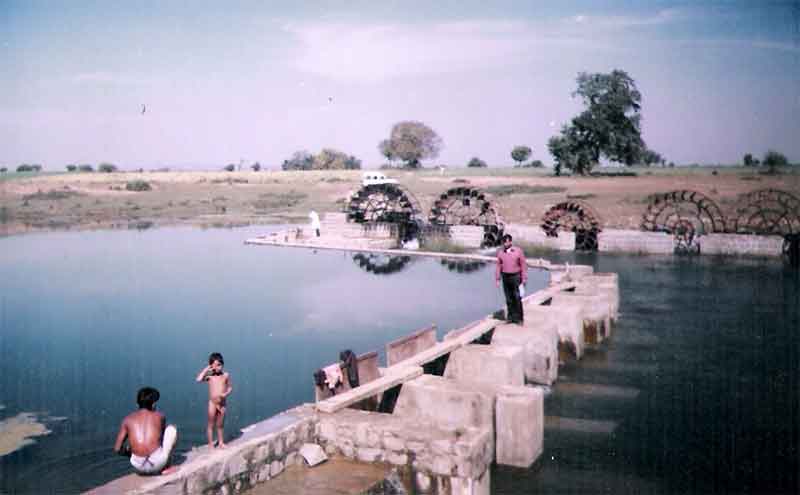
As more renewable energy is available in such villages, this can be used also for small and cottage-scale industrial and artisan units as well as for food processing. To give an example, Mangal Turbine can be used for many kinds of food processing as well. However it is important also to develop renewable energy sources at village level in ways that these do not lead to increasing dependence of village communities. If simultaneously there can be training of barefoot renewable energy engineers, and if the entire development pattern of renewable energy is such as to minimize the possibilities of dependence and increase the possibilities of self-reliance, then the entire effort will be more useful, viable and sustainable. Mangal Turbine is one example of such self-reliant development of renewal energy.
Subscribe to Our Newsletter
Get the latest CounterCurrents updates delivered straight to your inbox.
The resilience of rural communities is also very important in times of climate change, particularly in the context of adaptation, and the increase of self-reliance of rural communities in turn is very important in this context. In India fortunately this concept could survive and retain respectability because Mahatma Gandhi and several of his disciples had supported this in the form of gram swaraj (rural self-reliance). The concept of khadi is also related closely to it—at one level this means making and wearing cloth that is hand spun and hand woven but at a wider level this stands for protecting self-reliant, village (or small town) based industrial or artisan units. The principles of gram swaraj can provide a framework for our climate change response so that this can be taken forward within a framework of village self-reliance instead of allowing big business interests to introduce all kinds of distortions to suit their narrow interests. This is a time for being very cautious regarding the decisions and choices we make.
Bharat Dogra is Honorary Convener, Campaign to Save Earth Now. His recent books include India’s Quest for Sustainable Farming and Healthy Food, Protecting Earth for Children, Man over Machine and A Day in 2071.

